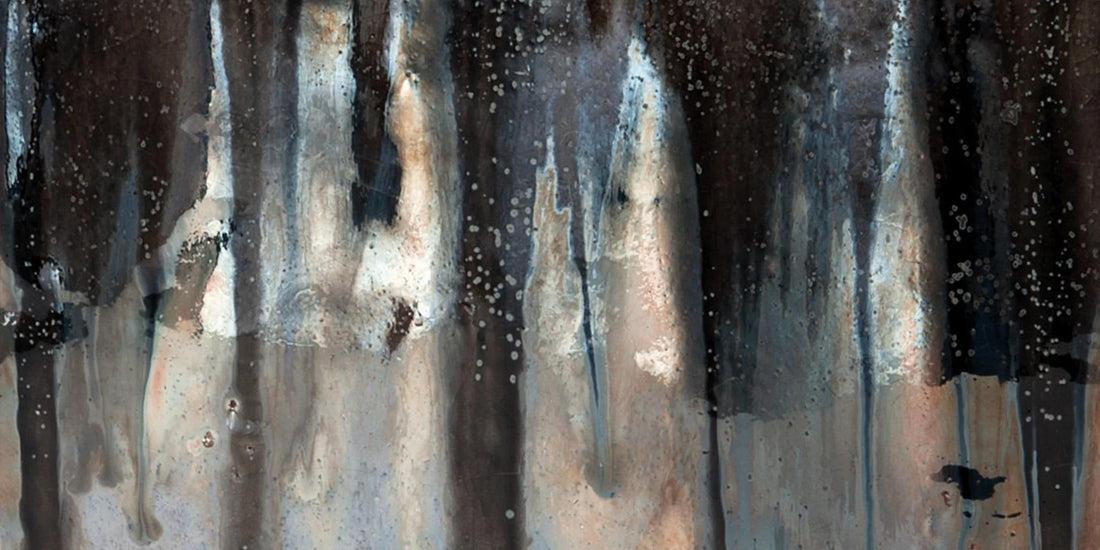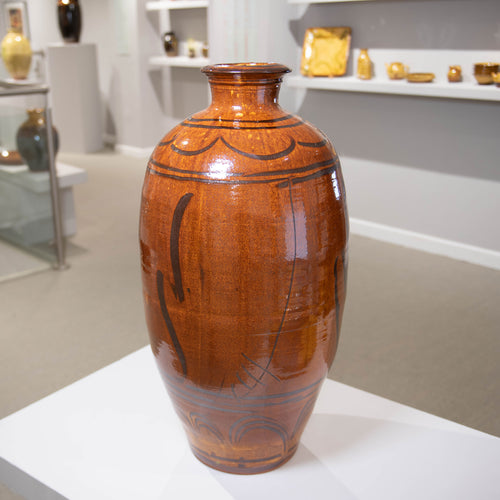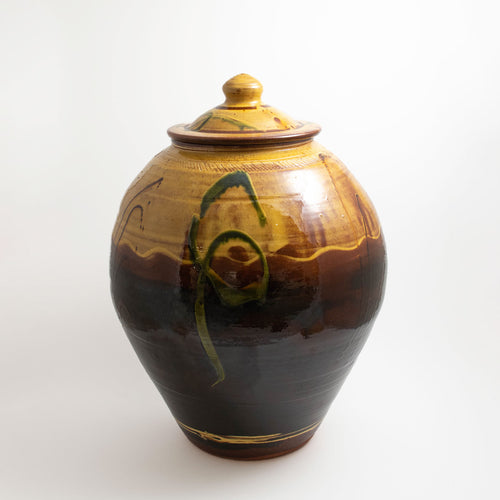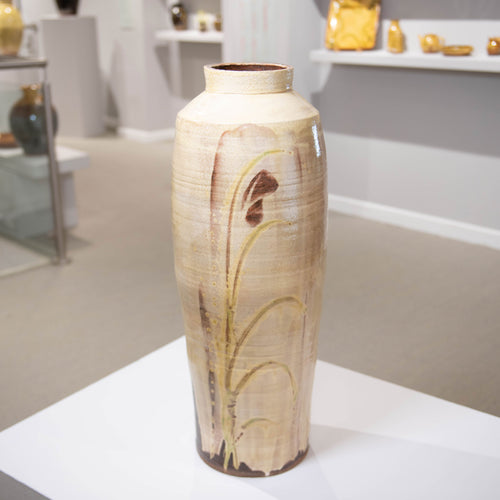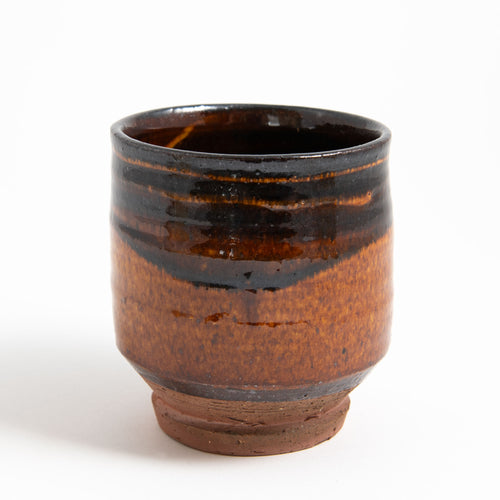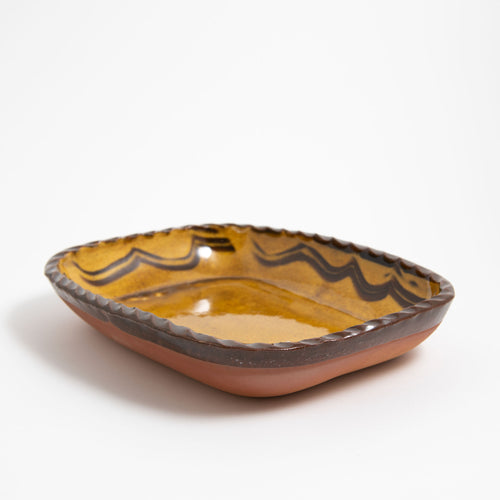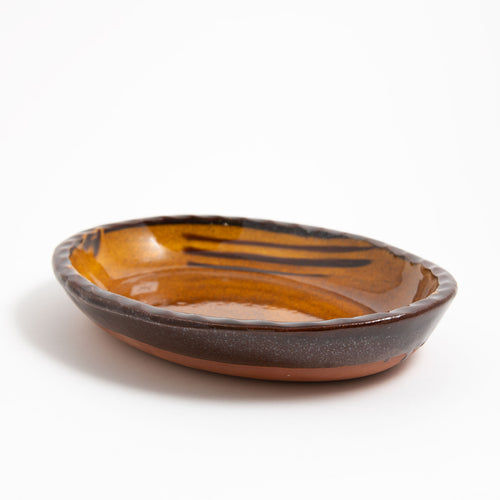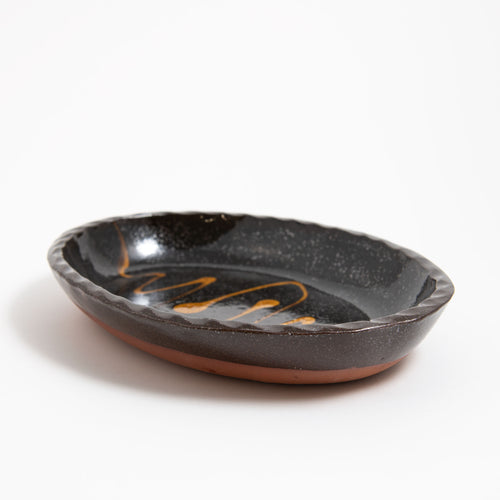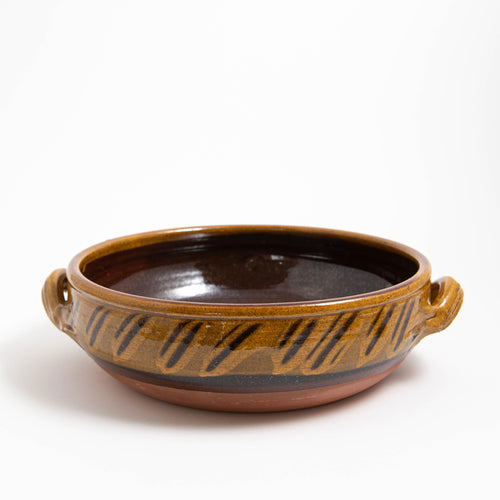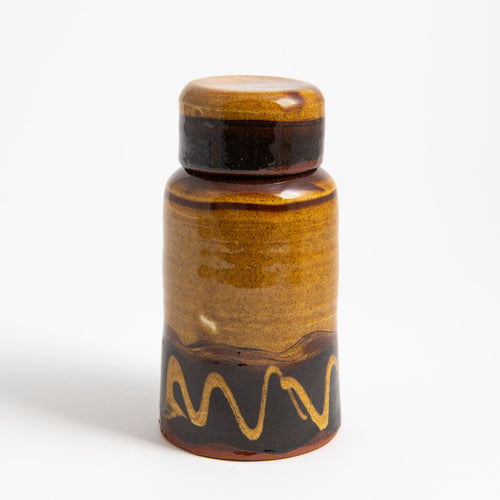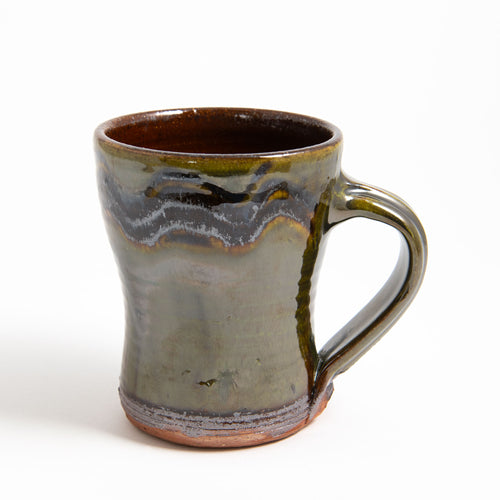When you first start collecting pots, keeping track of which glazes are which can be more than a little tricky.
The sheer variety of glazes available is almost overwhelming. Some are applied by hand while others are the natural result of the atmosphere in the kiln. The same glaze can have an endless number of recipes and appear totally different on one potter's work to another's.
Which is why we've put together a basic glossary of glazes so you can start to get your eye in.
Without delving too deeply into the alchemical chemistry behind it, we've explained roughly how each glaze is made, what it looks like, and offered some examples of work to demonstrate just how different each glaze type can appear in the hands of different potters.

ash glaze pools on the paddled surface of a Phil Rogers bottle
1. Ash
Glazes made with ash have been used for over 3000 years. Most commonly the ash used comes from burnt wood logs, with different tree species offering subtle variations of colours from dark browns and olives through to lighter pale greens.
After being cleaned of harmful chemicals the wood ash is mixed with water and other materials to form a glaze mixture to be applied to pots before firing. This glaze mixture then melts under the heat of the kiln, combining with silica – an oxide found naturally in sand and quartz - in the clay to form a glassy surface on the pot.
Potters who wood-fire can also rely on the source of ash from their wood fuel for a 'natural ash' glazing. Ash particles carried around the kiln by the hot air and flames land and melt on the pots, often creating dramatic colour variations on their surfaces depending on their position in the kiln.

(left to right) - natural ash jar by Svend Bayer; pine ash glaze plate by Phil Rogers; ash glaze plates by Mike Dodd

the heavy orange blush of a Lisa Hammond soda glazed Tsubo
2. Soda
Soda glazing generally takes place during the firing, rather than being applied beforehand. Soda ash (sodium carbonate) is sprayed in a liquid solution into the kiln for prolonged periods of time. The soda vaporises and is carried through the kiln chambers by the flames, landing on pot surfaces as the fire comes into contact with them and creating varied ‘pitted’ effects similar to salt glazes.
The interaction between soda and pot can be anticipated by applying different slips - mixtures of water and clay - or glazes to the pots before firing. The soda vapours landing on the slips combine with silica in the clay to create dramatic oranges and yellows and deep blue glasses.
Lisa Hammond has been championing the method for some time now and her soda glazed pots rank among the world’s finest.
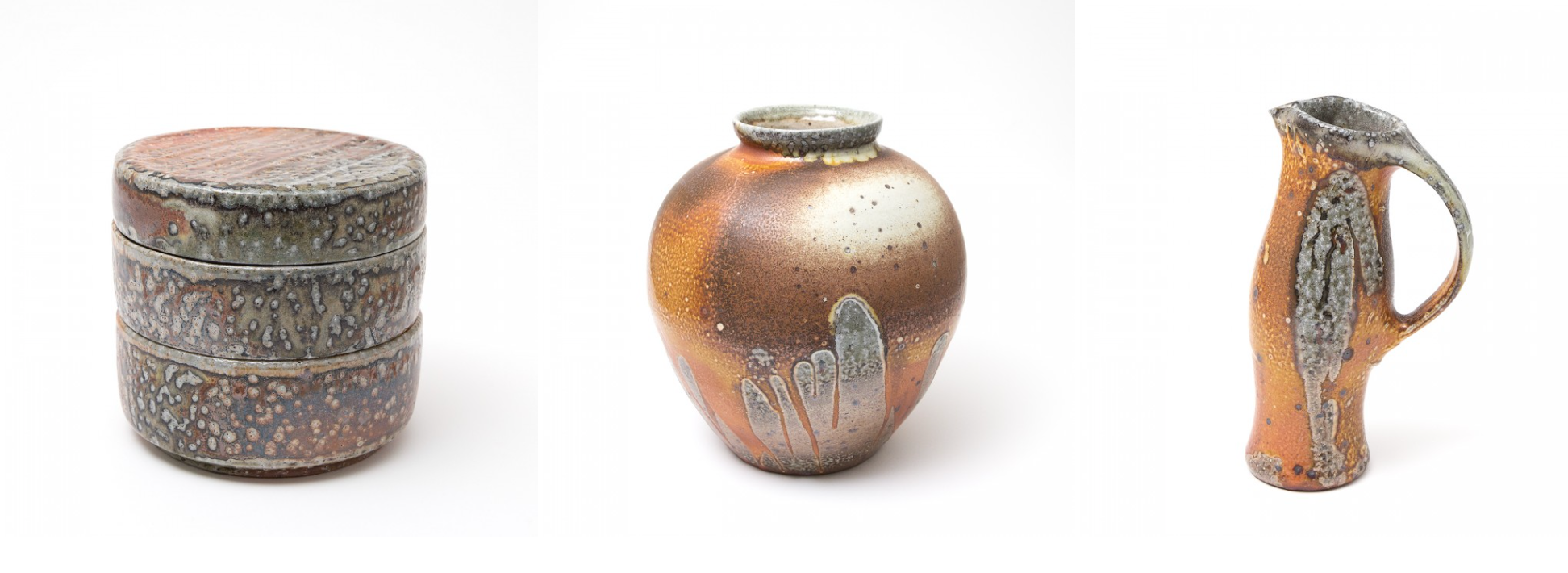
(left to right) - soda glaze Jubako box, Tsubo jar, and leaning jug, all by Lisa Hammond

the typical 'orange peel' surface of a salt glaze box by Anne Mette Hjortshøj
3. Salt
As with soda glazing, salt glaze is not applied to the pot but occurs as a result of chemical reactions during the firing itself. Salt is thrown into the kiln as it arrives at its peak temperatures and vaporises. The sodium within the salt then combines with silica in the clay to form a glaze surface.
Potters often talk about the desired ‘orange peel’ effect of salt fired pots, where the glaze surface appears pitted and bumpy. Potters who salt fire also often make use of clay bodies and slips which contain iron or cobalt, lending their surfaces a rich dark red or blue colour.

(left to right) salt glaze square bottle and teapot by Anne Mette Hjortshøj; salt glaze chawan by Phil Rogers

astonishingly thick red and white shino by Ken Matsuzaki
4. Shino
Shino glazes were first developed in Japan during the mid-1500s. They are distinguished by their large feldspar content, minerals that lower the melting point of the glaze mixture and help bond its distinct elements. They generally range from milky whites and pinks to deep reds, oranges and greys depending on their makeup and firing and can vary hugely in appearance from potter to potter.
Of particular interest in Shino wares is the phenomenon of ‘carbon trapping’, where carbon is caught within the glaze during the firing, creating bubble-like spots or dark grey patches on the surface of the pot. Though it is sometimes described as a glaze defect, this blushing effect can be especially attractive and is often sought after by potters.

(left to right) - white Shino vase by Lisa Hammond; Shino jar by Phil Rogers; Shino tea bowl with natural ash by Nic Collins

red iron-rich clay left exposed by finger swipes through jet black Tenmoku glaze
5. Tenmoku
Tenmoku is an iron-rich glaze, varying in appearance from reddish browns to jet black. Originating in China (the word Tenmoku is derived from tiānmù shān, ‘Heaven’s Eye mountain’, where the glaze was first used), it is thought to have been brought to Japan by Buddhist monks for use on ceremonial tea bowls.
Today Tenmoku is used internationally by studio potters such as Phil Rogers and Jim Malone on a variety of forms. The colour variation from russet to black depends partly on the thickness of the applied glaze and on the speed at which the pots are cooled from their firing: the quicker the cooldown period, the blacker the final glaze.

(left to right) - Tenmoku teapot by Jim Malone; Tenmoku bottle with finger swipes and ridged jug by Phil Rogers

finger swipes through a creamy white Phil Rogers Nuka glaze bottle
6. Nuka
An ash glaze variant, Nuka glazes use the ash of burnt rice kernel husks (Nuka is the Japanese word for rice husk). Rice husks are used for their high silica content, the mineral component that is responsible for the glassy effect of a glaze.
Nuka glazes fire to a creamy white colour and are often quite thick and opaque as a result of silica particles that fail to melt during the firing and remain in the glaze. Often they are combined with dark glazes such as Tenmoku to achieve rich contrasts on prominent areas of a pot, such as the rim or shoulder of a bottle or bowl.

(left to right) - Nuka plate by Phil Rogers; Nuka bottle with Tenmoku by Jim Malone; Nuka jar by Anne Mette Hjortshøj

the deep emerald green glaze of Oribe and accompanying iron brushstrokes
7. Oribe
Dating back to the 16th century, Oribe ware pottery is rarely found outside of Japanese ceramics. The brilliant green of Oribe surfaces is due to a glaze rich in copper. During the firing, the copper reacts in the heat of the kiln with silica in the clay, producing a transparent glaze surface with a distinctive emerald colour.
Often the unglazed areas of an Oribe ware pot are decorated with iron brush strokes which, when fired, become a bold orange or rust-red colour, contrasting beautifully with the cool green glaze.

(left to right) - Oribe rectangular vase by Ken Matsuzaki; Oribe lidded jar and sake set by Lisa Hammond
